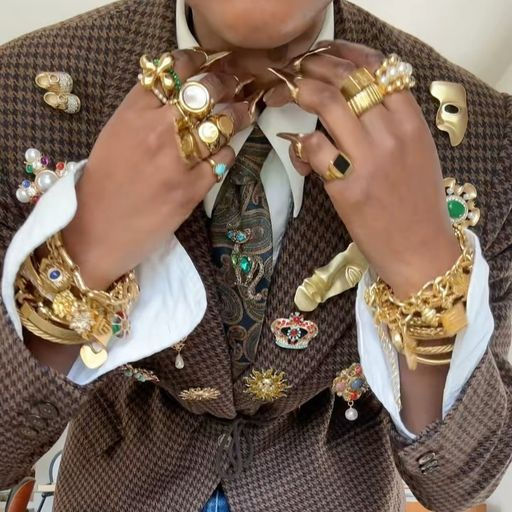From Pins to Payments: The Real Cost of Pinterest-Core Fashion
- Zara Bukhari
- Jun 29
- 3 min read

In an era where mood boards matter more than mall trips, Pinterest has quietly become the most influential front row in fashion, without ever hosting a runway show.
With over 498 million monthly active users as of 2024, and more than 15 billion pins saved each week, Pinterest isn’t just a source of inspiration; it’s a retail roadmap.
But the bigger story isn’t just aesthetic. It’s financial.
Behind the carefully curated flatlays and colour-coded capsule wardrobes lies a new economic engine, one where aspiration outpaces affordability, and the true cost of looking good is often deferred. Welcome to the world of Pinterest-core fashion, where style is paid for in monthly instalments, and identity is assembled through algorithms.
The Rise of Pinterest-Core: Aspirational Aesthetics Go Mainstream
Unlike TikTok’s fast-paced virality or Instagram’s influencer ecosystem, Pinterest is built for exploration, not comparison. Users spend time creating mood boards, not for show, but for planning. These are not mere wish lists; they are visual business plans for personal identity.
In a platform-first fashion movement now dubbed Pinterest-core, users construct aesthetic lifestyles piece by piece. Think: dreamy European summer fits, hyper-specific core aesthetics like "Tomato Girl Summer," "Clean Girl Fall," or "Office Siren." Each board tells a story, and every story demands a wardrobe.
This generation doesn’t just shop for clothes; they shop for cohesion. They’re building an identity narrative, and they want every outfit to be on-brand.
The Aesthetic Spending Mindset: Designed to Convert
Here’s where the economic implications start to sharpen. Pinterest has one of the highest conversion rates of any social platform. 98% of users report trying something they found on Pinterest, and they do so with high intent. Unlike casual Instagram scrolling, Pinterest behaviour is transactional by design.
But the friction comes at checkout.
According to Shopify data, up to 70% of online fashion carts are abandoned, with price being the most cited reason. Gen Z and millennials want the Pinterest lifestyle, but they often don’t have the disposable income to fund it.
Enter: Buy Now, Pay Later (BNPL).
Brands like Nike, Urban Outfitters, ASOS, and countless boutique labels now integrate BNPL providers like Klarna, Afterpay, and Affirm directly into checkout. The result?
Conversion rates jump by up to 30%
Average order values increase by 68%
Cart abandonment decreases dramatically
In other words, financing isn’t just a backend tool; it’s a front-row fashion strategy.
Shock Stat: Most BNPL Users Are Already in Debt
What consumers may not realise is how psychologically loaded BNPL is.
A 2023 study found that 43% of BNPL users had missed a payment. Another report by LendingTree revealed that nearly two-thirds of Gen Z users who use BNPL are also carrying credit card debt.
Deferred payments, marketed as convenience, are often quiet conduits for overspending. When users emotionally connect with aesthetic visuals and feel a sense of urgency to match the look, financial caution collapses.
Pinterest-core may sell a dream, but increasingly, it’s a dream bought on credit.
For Brands: High Reward, High Risk
Retailers love aesthetic-driven traffic, until it turns into inventory deadweight. The Pinterest effect pushes brands to churn out highly visual, hyper-specific collections. But trends driven by internet aesthetics have notoriously short shelf lives.
If a collection drops too late or misses the vibe? Brands are stuck with markdowns. According to ShoesReport, fashion labels can lose up to 30% of margin when unsold stock piles up due to mistimed aesthetic launches.
There’s also a post-purchase twist: research from Duke University shows that highly aesthetic products, those that are too pretty, too pristine, are used less.
Why? Consumers fear ruining them. They sit in closets, beautifully untouched. The result? Lower product satisfaction and reduced repeat buying.
This insight should haunt every CMO banking on Pinterest virality alone.
Where This Is All Headed: A New Financial Frontier
‘Pinterest-core’ isn’t just a fashion phenomenon; it’s a financial one. It reflects how we dream, how we shop, and most importantly, how we spend. As fashion inches closer to fintech, brands and buyers alike need to rethink what it means to “afford style.”
Because in this new economy of aesthetics, the question isn’t just what’s in your wardrobe, It’s what’s in your wallet.







Comments